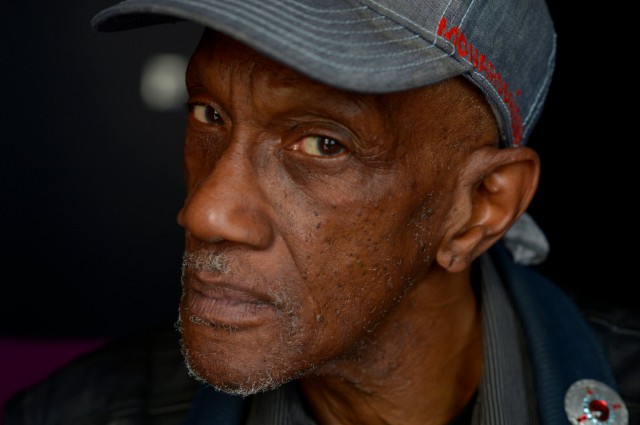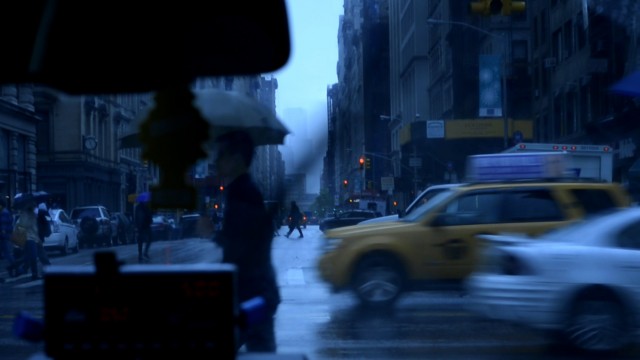Forget for a moment that Red Bull Music Academy has for a decade and a half assembled some of the world’s greatest-known artists to dish out inspiration. Forget that that’s Brian Eno’s mug staring back at you with cool, blue eyes. Forget that music “careers” can span from finding ranking in Forbes to scraping together extra tips at a bar to own a synth, with a gulf in between that can make people question the value of their work.
If you’re reading this, it means that you probably have made music your life. You build music and maybe you build music tools, too.
And with something so meaningful, you have to wonder sometimes what it all means.
Well, now there’s a feature film dedicated to you.
What Difference Does It Make? is labeled, simply, “A Film About Making Music.” It’s available as a free download from Red Bull Music Academy on the occasion of their fifteenth anniversary.
The work of Mindpirates (sometimes-CDM-collaborating collective out of Berlin), the movie is set in New York with Red Bull Music Academy as the backdrop. There’s no lack of talent: the likes of Brian Eno, Lee “Scratch” Perry, Giorgio Moroder, James Murphy, Debbie Harry, Egyptian Lover, and Stephen O’Malley spill their guts and wisdom in equal measure. But the stars are also the earnest, young musicians gathered to learn from them.
All of this might be pedestrian, except that director Ralf Schmerberg and writer Easton West have made the production an ode to what really drives artists – angels and demons. (I can’t stop watching the trailer and equating “religion” with “golden retrievers on leashes,” whatever you want that to mean.)
I suspect that need, and over-thinking, the near-sexual urge and quasi-self-destructive tendency, anguish and ecstasy and revelation are all bundled up in the musical amateur and pro alike, the ones who didn’t make it into the academy as well as those who did.
And, of course, there’s no city in the world quite like New York for sky-high hubris and street-level pressure, projected dreams and gritty underground struggles beneath. (And pizza. They really do have great pizza. I know this, as the makers of this film I think are out eating various foodstuffs now.)
Let’s see what Ralf and Easton have to say for themselves about what they did, as it gets into the heart of Red Bull Music Academy but also quite a lot else.
When you do grab the free download, you’ll have plenty of food for thought.
Thanks, Easton, for putting this together.
Production Notes: A conversation with film director Ralf Schmerberg and writer Easton West from Mindpirates.
Ralf Schmerberg: “Our general approach was to make it a film that is not specifically about music. We realized that we didn’t want to talk specifically about music, but rather to talk about a life in music, so we could draw connections to other people’s lives and our own lives. We love the idea of taking music as the theme, but actually to make a film about how to make a life through art. How to live an artful life. The beauty of that is that we were able to speak to many different generations, and investigate many corners of the musical world. We knew we had a wide umbrella under which to explore these experiences.”
Easton West: “At the beginning of the film, you can hear a narration: I am speaking to DJ Assault. The conversation goes like this:
Mindpirates: It’s real easy, man. We’re trying to talk about life.
DJ Assaut: Life!?
Mindpirates: Just life… This is for a feature film.
DJ Assault: Oh, ok.
Mindpirates: And it’s a feature film that’s about when someone decides to become a musician. Everything that they’re going to encounter in their life. The journey that they take.
So the film is not so much about the production process, or how you write a song. Of course, musicians will talk about that because it is their life. But on a deeper level, everyone can identify what it means to be a creative person or what it means to be a musician; what it means to follow something that you love throughout your life. It’s not necessarily about having a dream, because some people’s dreams change, so it’s more about what it means to do something, period. Some of the musicians we talked to, their careers may have just been starting. It’s looking at all the stages that you go through. Often people celebrate the young and the new and the beautiful, but we also wanted to highlight people with a longer story arc in creativity throughout their life.”
Ralf: “It’s less about having a dream, it’s more about living a dream.”
On filming artists in the studio…
Ralf: “We all have a good connection to musicians – some of us are musicians. So we loved the situations we got dropped into. Our own curiosity was so strong that we felt like dogs let off their leashes, sniffing out what’s going on. The good thing was that at the Red Bull Music Academy, there was so much to capture. The studios were constantly in use and we could walk into a moment of musical creation at any moment, around any corner.”
Easton: “The Academy offered a rich diversity. It was important that we could talk to electronic musicians as well as acoustic instrumentalists and rappers. There were people from every generation; not just creating music on their own, but also collaborating and exiting their comfort zones. Entering new places, that they hadn’t explored yet. It was about the emotional aspect of creating music.”
On the role that New York plays in the film…
Ralf: “We know New York. And we knew that besides what was happening within these studios and performance spaces, we needed something else for people to resonate with, for the film to breathe out, and to get distance. And as another layer of visuals to connect the music with. Music itself has no specific image. We wanted to explore New York and capture images that connected to the music as well as adding a certain emotion. We wanted to go out and find music and sound and energy.
At the beginning I would not have imagined that so much of New York would be in the film, but I love that it shows the here and now. When you’re an artist, you leave the real world to enter an inner world, and give up your ‘here and now’ momentum. The world turns around you, and you get totally disconnected. Because you’re so intently editing, or writing, or whatever. So for us it was important to show the world that these artists were inhabiting at that moment.
At the same time, New York is a city where you walk. And we don’t like to let any opportunity pass for shooting. We walked 100, 1000 miles, and we came across a lot of great situations.”
Easton: “New York is such a huge and diverse city with so many people and so many things going on. There were an unbelievable number of parallels that could be drawn between the experiences of the participating and performing musicians, and those of the people whose everyday life is in the city.
On the shooting schedule…
Ralf: “We had four cameras. Mostly we would shoot with two, and the other crew members would organize what was going to happen next. But in other situations we would add a third or a fourth camera. All the Mindpirates can operate cameras, all of us can conduct interviews, all of us can do sound recordings.”
Easton: “We each have specific talents, but we all realise that to do the projects we want to do, we have to share responsibilities and tasks. It’s a gift.”
Ralf: “We didn’t plan any further than the day before. Of course we had to know what was going on at the Academy that day, what performances were happening at which venues. At certain times we needed to be in a certain place. But the hours in between were dedicated to getting lost. This led to us filming in the rain. It’s a classic trope of cinema to cover dogs in New York, and we came across a great number of amusing canine moments. Therefore the footage of New York wasn’t precious or romantic, it was what you come across on the street. Something democratic – the wide open public spaces.
One of our crews went out to shoot in the subways, because we wanted to shoot music that was not connected to any commercial aspect. And that was when they stumbled across (subway singer) Leroy Webb. You have a theme in mind, and then you fall over your star actor, more or less.”
Easton: “It was one of those moments when life shows you what to shoot and not the other way round.”
On the film’s key sequences…
Easton: “There are many great longer sequences in the film – the DFA night, and some of the longer time that we spent with musicians performing, as well as the footage of subway singer Leroy Webb – but many of the strong moments, and parts that allow your mind to travel, are also the small quick cuts to scenes in New York that exist in between interviews.”
Ralf: “We were very happy to have the footage shot at the homes of Malcolm Cecil and Tom Moulton. They are two outstanding characters, and it’s an insight into musicians’ homes, although that’s not the focus of the film.”
Easton: “Tom Moulton is someone we knew we wanted to shoot at home. There was one random clip on YouTube, of one of his assistants or his publisher, walking through his apartment. And it looked like a wizard’s cave, with books and CDs and records everywhere. He was the very first lecturer of the Academy, and we didn’t get to shoot with him until the very last week. It was very important to us to make that happen.”
On the film’s editing…
Ralf: “The editing is guided by the dialogue of the people who spoke in the interviews. Let’s say, the rhythms of their thought patterns. People coming and going – sharing moments with you. I think that’s the bones of the film, because that’s where you gain insights level by level until you reach a point of enlightenment. You have fear, anxiety, courage, success, fame, failure. All these things happen. Once we found the structure, we had the luxury of being artistic, to find intuitive ways of editing footage of New York around that, and to match the edits with music. To mix things. It’s a massive collage, built around a passion for shooting images and editing. We spent much too long in the edit room.”
Easton: “The story arc of the film is based in the interviews. We took a naïve look at this state of enlightenment, or just achieving some type of understanding. This naïve perspective of starting out with dreams and the subsequent challenges, that really developed the story arc. And it allowed so much space in between to use music, and to use sequences and edits to move the story along.”
http://www.redbullmusicacademy.com/
Full stream and download available on the 18th of February.
And



